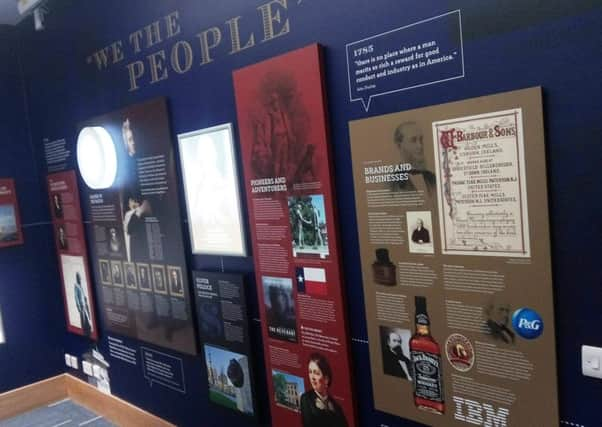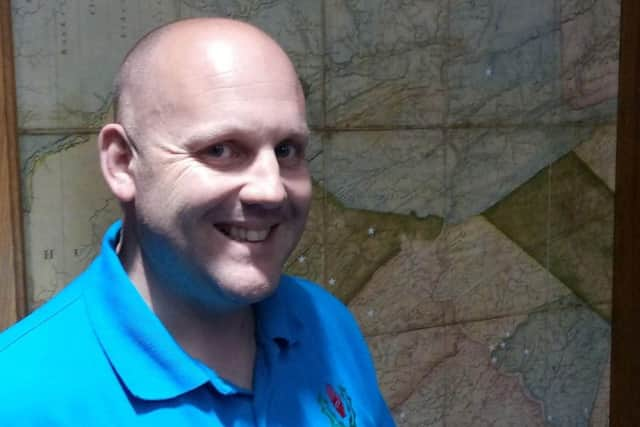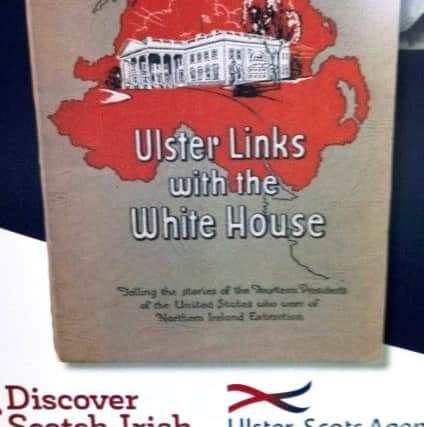Independence Day is as much as celebration for Ulster-Scots as Americans


It is estimated that 200,000 Ulster-Scots migrated to what became the United States of America during the 18th century, many of them Presbyterians who were legally disadvantaged in the north of Ireland because they were dissenters to the Anglican state church.
The Discover Ulster-Scots Centre in Belfast has a permanent exhibition which focuses on the Ulster-Scots influence in America – covering, among others, the 20 US presidents with Ulster-Scots links, the banker who invented the dollar sign, and the frontiersman who inspired The Revenant film.
Advertisement
Hide AdAdvertisement
Hide AdMuch is made about the ability of the Ulster-Scots to assimilate wherever they go, often assimilating to the point where their ties to their homeland are harder to uncover.


Decades have been spent unravelling the journey of the Ulster-Scots people and much of that research is presented on story boards in the centre which is located in Gordon Street in Belfast.
The Ulster-Scots Community Network’s Matt Warwick provided a guided tour of the tourist centre’s US section: “Most other people who go to the new world become hyphenated – Irish-Americans, African-Americans, Latin-Americans. Whereas the ones who left here got Scots-Irish for a while then they just became American.
“You have to remember that a lot of the people who left were from Presbyterian stock. They left because they were disadvantaged here in the Province.”
Advertisement
Hide AdAdvertisement
Hide AdQueen Anne’s 1703 Test Act caused further discrimination against those who were already disadvantaged because they did not participate in the established Anglican church.


Matt said: “These people were going to (the North American colonies of Great Britain) for a new opportunity, freedom of conscience, religious tolerance, to escape disadvantage.
“Maybe they were happy to turn their back on that, maybe at the end of the 1700s when the situation arose to decry independence, breaking away from England, they were very happy to be at the forefront of that.
“At this stage, you had third, fourth generation Scots–Irish, Ulster Scots. It had been ingrained in them why they left home. They said, ‘this is a new start and we’re not going to let it turn into what it was before we left’.”
Advertisement
Hide AdAdvertisement
Hide AdMatt said around three or four American tour groups would visit the centre in a week: “We explain to them why people would have left Scotland to come to Ulster in the 17th century (the Plantation of Ulster), what they brought with them in terms of language, religion, music and culture, and then what they took with them 100 years later when they went to America.”
Much is made of the Ulster-Scots links to 20 US presidents, though Matt was surprised that none of the American tourists had heard of one of the most significant Ulster-Scots in US history: “The one thing that surprises me is that not one person has ever heard of Charles Thomson, the secretary of the Continental Congress, the man in whose handwriting the original Declaration of Independence is written. I think three of the original signatories of the Declaration of Independence were men of Ulster birth.
“Charles Thomson was the man who designed the great seal of the United States of America. The seal is emblazoned on the side of Air Force One, it’s on the carpet in the Oval office, it’s one of the most recognisable images in the world. They’ve heard of everybody else, but they don’t really know his story.”
Mr Thomson, originally from Upperlands in Co Londonderry, emigrated to America with his father in 1738 as a 10-year-old. His father died on the voyage and he arrived in the new world as an orphan.
Advertisement
Hide AdAdvertisement
Hide Ad“In every aspect of American cultural, civic and political life you will find people of Scots-Irish ancestry,” Matt said.
He gave examples of soap maker James Gamble from Ennikillen, who started one of the biggest pharmaceutical firms in the world – Proctor and Gamble; actor John Wayne, who has family roots between Randalstown and Ballymena; and activist Rosa Parks, whose middle name McCauley reveals her Scots-Irish ancestry.
Matt added another: “The dollar sign was created by Oliver Pollock born in Bready in Co Tyrone. He was the equivalent of a billionaire in 18th century terms. He was so influential that anyone who did business with him didn’t want to upset him so they used the same symbology.”
Mention is made in the exhibition of Hugh Glass, the man who legend has it survived after he was left for dead by companions after being mauled by a grizzly bear.
Advertisement
Hide AdAdvertisement
Hide AdBorn in Pennsylvania he is often cited as having Scots-Irish parentage and his story has been told in two films, mostly recently in 2015’s The Revenant, played by Leonardo Di Caprio.
Matt said that no-one has ever established a precise location of his Scots-Irish ancestry.